Understanding Carbon Composition Resistor: are they useful today
Carbon composition resistors were widely used for many years, but since the 1960s it has been superseded by other types with better performance but they are still invaluable for some applications.
Home » Electronic components » this page
Resistor Tutorial Includes:
Resistors overview
Carbon composition
Carbon film
Metal oxide film
Metal film
Wirewound
SMD resistor
MELF resistor
Variable resistors
Light dependent resistor
Thermistor
Varistor
Resistor colour codes
SMD resistor markings & codes
Resistor specifications
Resistor maximum voltage
Where & how to buy resistors
Standard resistor values & E series
Carbon composition resistors, often called carbon composite, or even carbon comp resistors are an old type of resistor that has been superseded on many areas of electronics design these days.
These carbon composition resistors were used for many years as the main type of resistor in many valve or tube based equipment ranging from radios and television sets to more professional forms of electronic equipment.
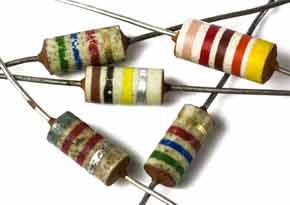
The carbon composition resistor was able to withstand the operating environment of the equipment for which it was used, but in comparison with the standards of today its performance was poor in several respects.
However there are still a few areas where this type of resistor is invaluable and outperforms many of the more modern resistor types that are far more widely used these days.
Video: Understanding Carbon Composition Resistors
Carbon composition resistor timeline
The carbon composition or carbon composite resistor was one of the first types of resistor to become established along with wire-wound types. They were used in various forms right up until the 1960s, particularly with valve or tube based equipment where size was not particularly important. In the 1960s with the introduction of more transistorised equipment, smaller resistors with better performance were required and the use of carbon composition resistors fell away in preference to carbon film or later metal oxide film resistors, although they are used in some specialised applications.
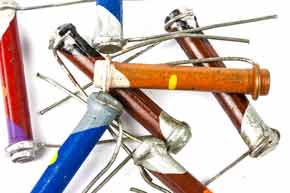
Carbon composition resistors dating from the early 20th century had uninsulated bodies. The leads were wrapped around the ends of the resistive element and soldered. The completed resistor was painted in colours to provide the coding for its value.
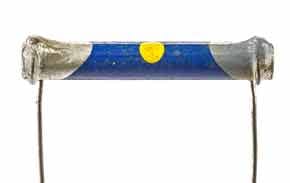
Later styles had a form of ceramic body to protect them. These are generally the more familiar ones that tend to be seen used in many older valve / tube radios.
Carbon composition resistor construction
The main resistive element within a carbon composition resistor is made from a mixture of finely ground or powdered carbon and an insulating material which was normally ceramic and a resin to bond the mixture together. The mixture was pressed into small rods under heat.
Once manufactured the carbon composition rods have leads added. This is done either by pressing leads into either end of the rods, or by using metal caps attached to either end onto which wires are added.

The rods are baked and then the next stage is to add a coating because the rods themselves are very porous and would take in moisture, dirt and grease which would alter the performance.
Whilst occasionally some resistors do not have coatings, most do and typically this consists of a ceramic cylindrical coating around the resistor.
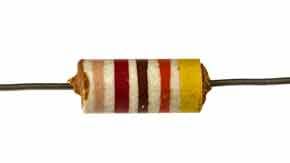
The resistance is changed by altering the composition of the graphite mix in the rods, or extending them. Power dissipation capability is increased by making the rods wider, although this does also decrease the resistance for a given mix.
In view of the manufacturing tolerances, it was very difficult to manufacture them to a given value. Instead they were sorted after manufacture. Typical tolerances were only ±20%, although ±10% and occasionally ±5% versions were available.
Values of 1/4, 1/2, 1 watt, and in some cases up to 5 watt carbon composition resistor types were and still are manufactured.
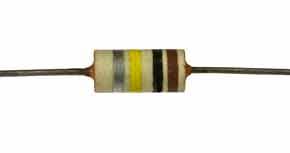
Advantages and disadvantages
Carbon composition resistors are only seldom used these days as a result of their disadvantages. However the carbon composition resistor does have some advantages and as a result it is still used in some specialised applications.
Advantages:
- High energy pulse capability: The carbon composite resistor or carbon composition resistor is able to withstand much higher energy pulses than most other types available today. The size of the resistive rod is much larger and able to absorb more energy than the film types that are more widely used in electronic components. As a result they are sometimes used in areas where high energy pulses may be present.
- Low inductance construction: The fact that the resistor consists of a cylinder of resistive material without any helical track cut into it means that these resistors have a very low inductance.
Disadvantages:
- Stability: The carbon composition resistor has a very poor level of performance in terms of stability. The value of resistance could change by as much as 5% in a year even if it is not in use. Heat could also change the value. Soldering could alter the value by 2 or 3% and operation at temperatures up to 70°C could alter the value by 15% or more.
- High temperature coefficient: Carbon composite resistors also exhibited a very low degree of temperature stability. Figures for the stability of worse than 1000 ppm/° C were to be expected.
- Noise: Carbon composition were very noisy as a result of the granular composition and structure of the resistive element. Other forms of resistor are vastly superior.
Carbon composition resistor applications
Although carbon composition resistors are not widely used these days there are some applications for which they are well suited. These often arise from their ability to absorb high transients without the risk of damage that other resistors might suffer..

- Surge protection circuits
- Current limiting circuits
- Other protection circuits
- Welding controls
- Some high frequency applications because their construction does not introduce inductance
Although the construction of carbon composition resistors is relatively straightforward and has been established for many years, the lower usage means that they are more of a specialist item and they cost more than other types, although they are still relatively cheap.
Typical carbon composition resistor specifications
Typical performance figures for carbon composition resistors are given below as a guide to the performance
| Carbon Composition Resistor Performance Guide | |
|---|---|
| Carbon Composition Resistor Parameter | Carbon Composition Resistor Performance |
| Typical tolerance availability | ±5%, ±10%, ±20% |
| Value range | 1Ω - ~10MΩ |
| Load life (% change over 1000h) | +4 |
| Max noise (µV/V) | 6 |
| Temperature coefficient (ppm/°C) | >±1000 |
| Voltage coefficient (%/V) | 0.05 |
| Max resistor temperature (°C) | 120 |
 Written by Ian Poole .
Written by Ian Poole .
Experienced electronics engineer and author.
More Electronic Components:
Batteries
Capacitors
Connectors
ADC
DAC
Diodes
FET
Inductors
Memory types
Phototransistor
Quartz crystals
Relays
Resistors
RF connectors
Switches
Surface mount technology
Thyristor
Transformers
Transistor
Unijunction
Valves / Tubes
Return to Components menu . . .




